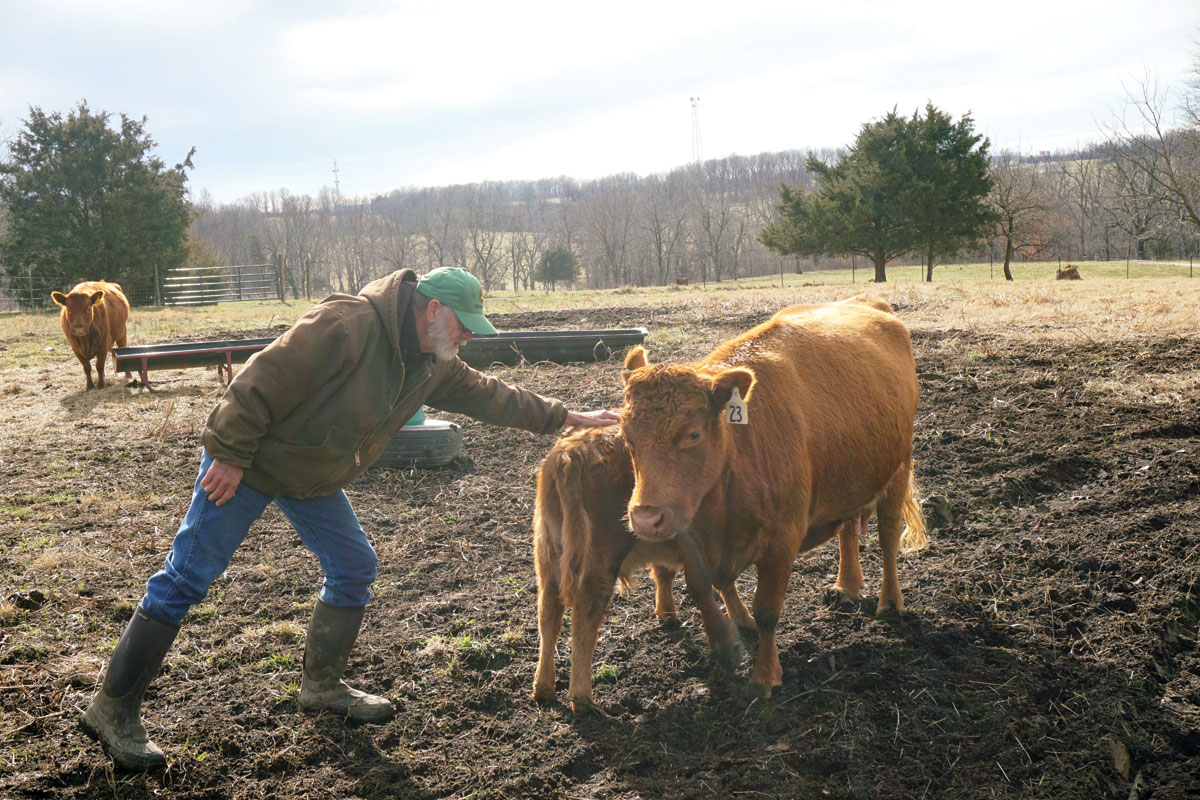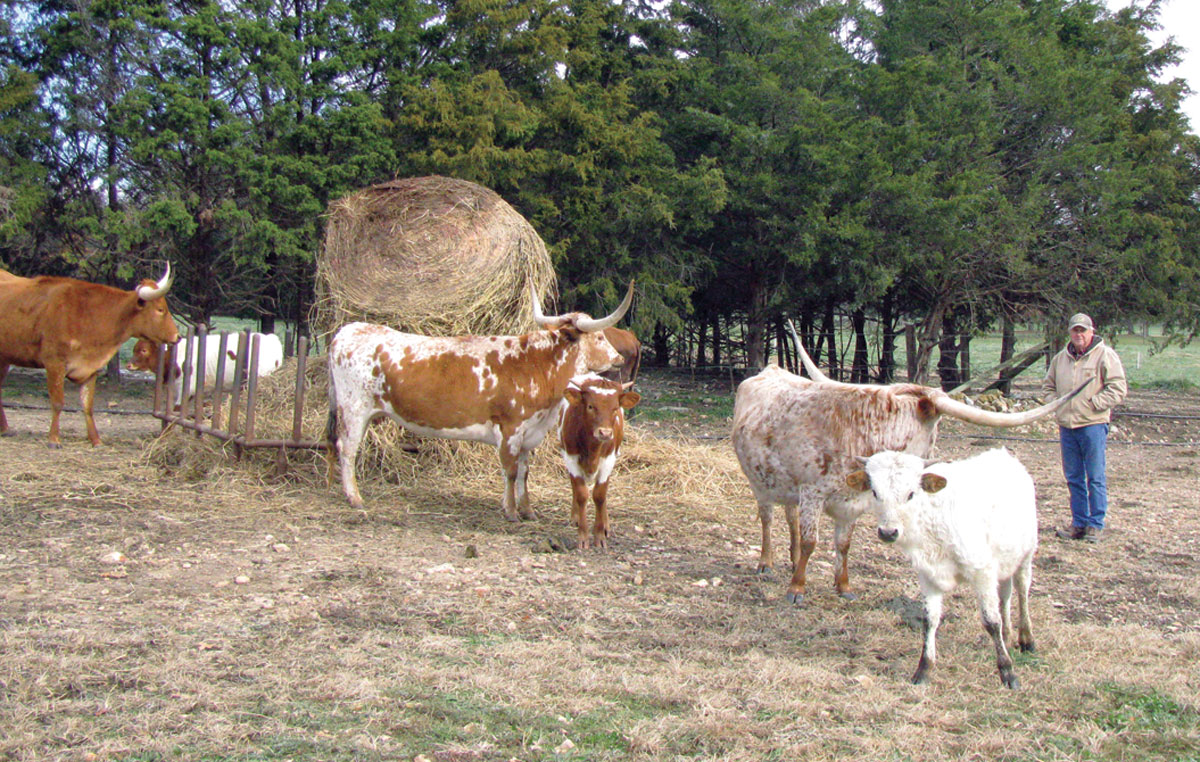
The Andersons have both Dexter and Angus herds
Ted Anderson, a retired FDA investigator, has Ironman triathlon medals on the wall of his office next to numerous ribbons, belt buckles and plaques commemorating the many championships earned by his registered Dexter herd at his Emerald Springs Farm, located near Strafford, Mo.
It is obvious Ted’s cattle are not just a hobby, even if his herd began that way.
As he neared retirement, Ted knew he wanted to get back into agriculture. He has many fond memories of summers spent at the farm of his aunt and uncle in his native Kansas. Thanks to a trip to the annual Fall Farmfest in Springfield, Mo., he and his wife Vicki found Dexters in 2004. Today he has about 24 head of Dexters in total. He sees himself as a seedstock producer for both red and black genetics.
“With only 15 acres of pasture, I didn’t think I could make a nickel on an Angus,” Ted said with a laugh. “I talked to a breeder named John Foley and it went from there. I saw a video of a bull calf at Farmfest that wasn’t even weaned yet and I bought that bull sight unseen.
“They are promoted as being ideal for small acreage. We’re not competing with the commercial guys and they don’t want a carcass the size of a Dexter. The Dexters are good natured, easy to handle and easy to work with.”
Their farm has produced six national championships, as well as numerous other awards and titles in the Dexter breed. Their bull Powerball is a two-time grand champion bull at the American Dexter Cattle Association’s national show, and received the inaugural Best of Show award at the ADCA national show in 2017, the 60th anniversary of the organization.
The showing side of the operation began as a way to show support for the Dexter breed.
“The association got Dexters into the Houston Livestock Show and they had to have a certain number there,” Tom recalled. “When I started 14 years ago, there weren’t that many around, so I took a bull down there and I started campaigning at the Cadillac of livestock shows… To get your name out there for bulls in the Dexter breed, you have to take them to the shows.”
Emerald Springs Farm as done well selling their calves over the years. At times there has been a waiting list for their genetics.
“My philosophy with my cattle is that it doesn’t cost anymore to feed good cattle than it does a hammer head,” Ted said. “I always wanted the best. I concentrated on red genetics when they were hard to find, and they sold for twice as much as the black. Again, it doesn’t cost anymore to feed a red one than a black one. Dexters use to be rare and the red ones were only 5 percent of the breed, so 5 percent of a rare breed is extremely rare.”
When an artist was commissioned to create a clay Dexter statue that would become the mold for the annual Missouri Dexter Breeders Best of Show award, it was modeled after the Dexters that roam Ted and Vicki’s farm.
Dexters are considered a dual-purpose animal for both beef and milk production. Ted focuses on the beef attributes and they are popular in grass-fed operations because they require fewer inputs. Despite a growing number of Dexters in the Ozarks, Ted said the breed is still a small market.
“I think the Baby Boomers are retiring and wanting a place out in the country, Ted said. “They’re going to figure out, ‘Why waste my time mowing it when I can have sheep, goats or cattle?’ It’s a niche market, but there’s a lot of interest. These Dexters eat about half as much as a big cow. The calves have been bringing really good money, so on your per acre return, it might be a hobby farm, but it can make you some money.”
Ted does his own AI work and strives for fall calves.
The Andersons also own about 32 head of commercial Angus, housed at a neighboring farm owned by Joe Kincaid.
“When I moved here, I saw the pasture at Joe’s,” Ted recalled. “It was rented out, and when it became available, they asked me if I wanted to rent it. As it happened, one of my Dexter buddy’s neighbors had to sell his cattle, which were Angus and Limousin, so I had the opportunity to buy the whole bunch and rent Joe’s pasture all in the same month.”
While Dexters remain his first and primary herd, Ted does find desirable attributes in his Angus herd.
“You have more inputs, but it’s much easier marketing,” he said. “There’s a sale at a sale barn just about everyday of the week, but you can’t pick your selling price.”
The herds and their focus are kept separate, and some of the management practices differ. The Angus herd is bred for fall calving through natural cover and the calving season is typically only 30 days, with a few calves in the following weeks.
Joe also partnered with the Andersons on the commercial herd, but his declining health from Multiple Sclerosis forced him to step away from the cattle. Ted said Joe, however, remains as active as possible on his 110-acre farm, which he shares with his mother, Rose Mary. Ted and Joe have developed a close relationship over the years, with Ted calling Joe “the idea man.”
Ted also relies on Joe for advice, and Joe passes on his experience and knowledge with others, including high school students he has worked with over the years to do projects, such as revitalizing a 100-year-old barn. Despite his physical limitations, Joe remains very involved in his farm, and the barn renovation was no exception.
Ted recalled driving down the hill to the barn in disbelief as he watched Joe being lifted up in the bucket of his tractor to supervise the floor being laid in the loft of the barn. Joe, with the help of a hired hand, oversees the farm’s day-to-day operations, including haying and other improvements.






